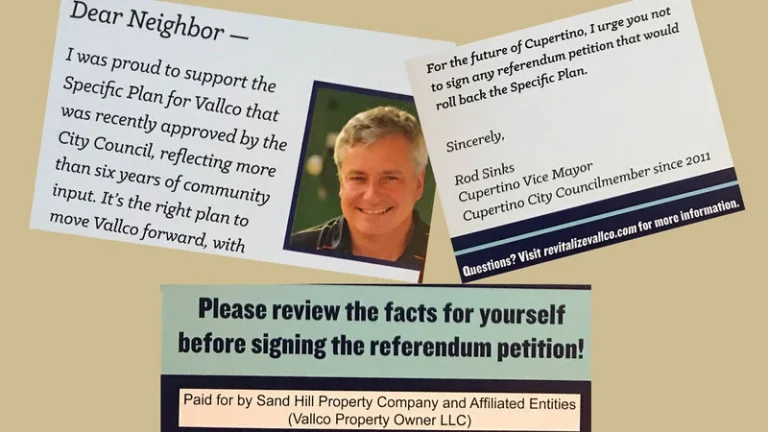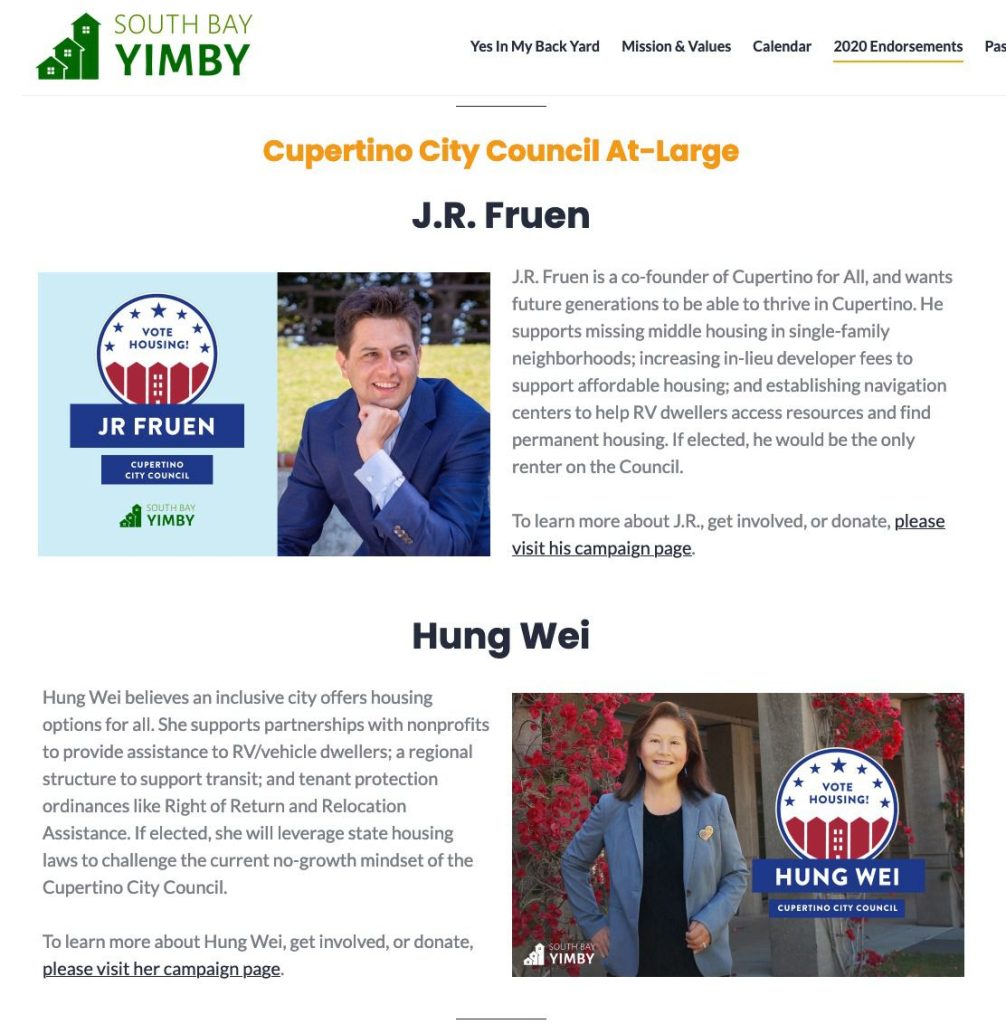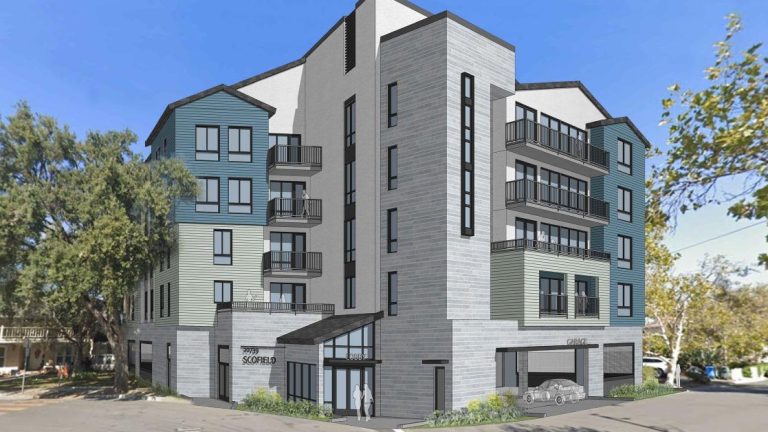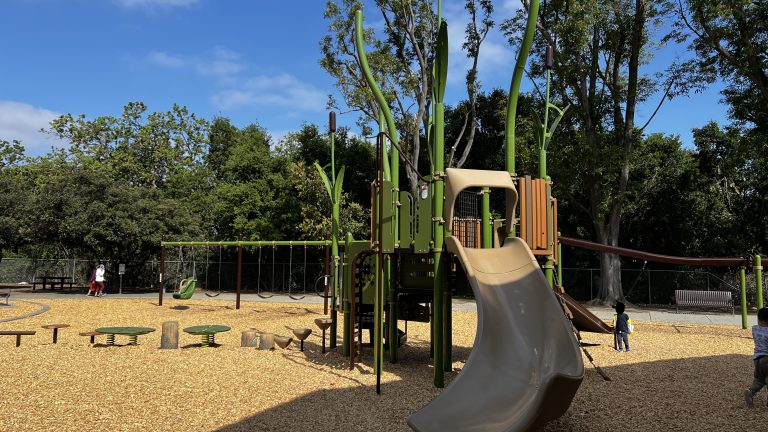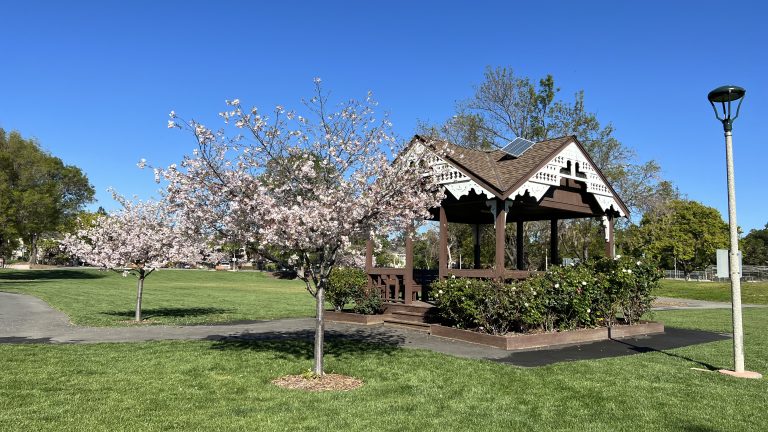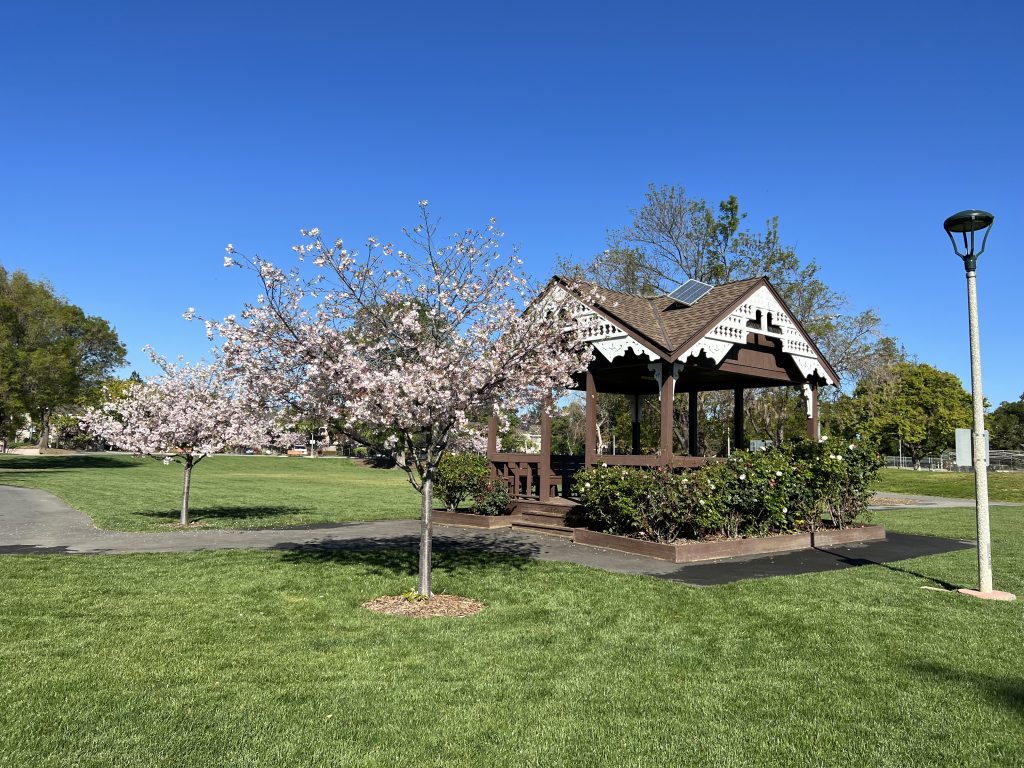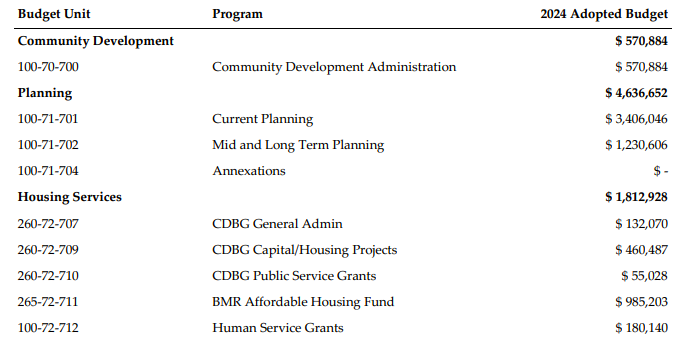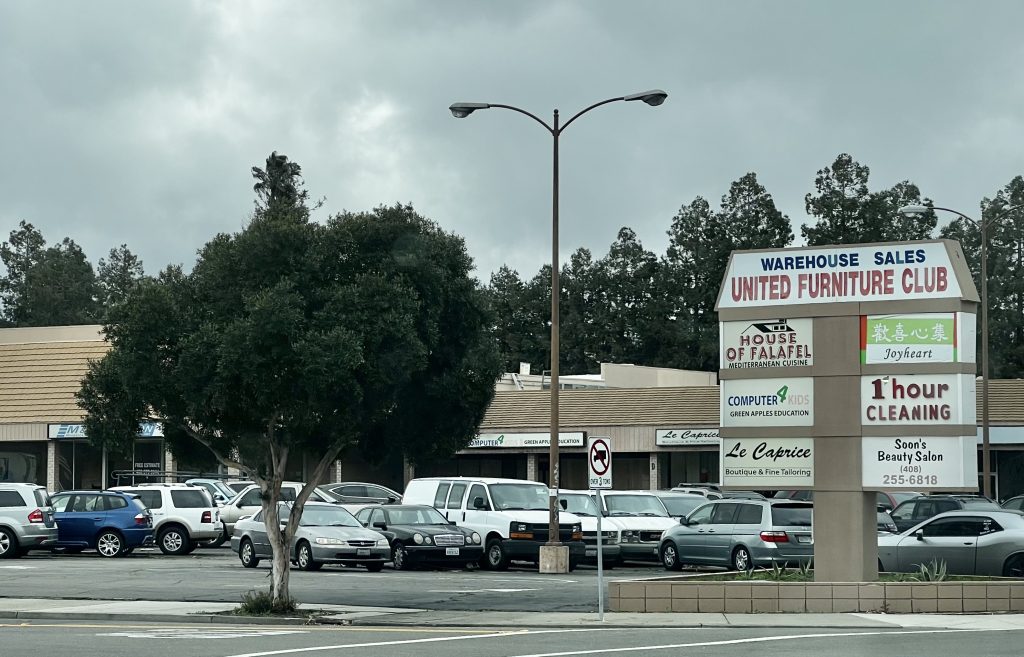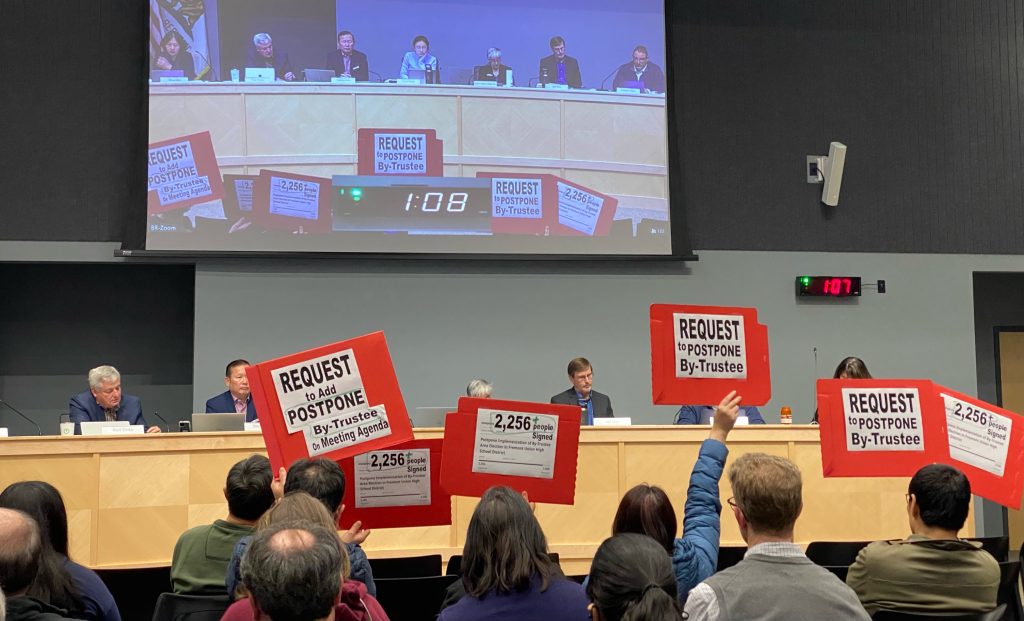| In this post we focus on how the Builder-Political Complex uses a sophisticated disinformation network to achieve its goals. The disinformation network has been extremely successful in misleading the residents. Three years ago when CUSD shut down multiple school campuses, most residents believed it was because of a budget shortfall due to falling enrollment. The reality was that CUSD was projecting almost $39.5M of surplus over the next five years. The video by CUSD Trustee Jerry Liu sheds light on it |
| The modus-operandi of such campaigns is to get articles & editorials published in regional news outlets which support policies sponsored by builders, without providing the readers with a comprehensive or objective view. For example, articles were written blaming falling school enrollment to justify the need for a lot more new housing in Cupertino. However they failed to mention that prior to the drop the enrollment had increased every year for almost 15 years. Or that even after the drop CUSD schools were running way above planned capacity with almost 25% of classes in portable classrooms. Or that the year after the decision to close the schools to save $1.5M, CUSD was projecting the biggest surplus ever in its history, $16M in the next year. |
In this article we will focus on the disinformation campaigns organized by JR Fruen’s Cupertino For All, especially those run by its Information Officer, Jean Bedord.
| Disinformation: East Cupertino vs West Cupertino |
One method employed by the builder’s lobby is to project residents’ concerns of builders’ influence over city council as a conflict between the East and West side of Cupertino. The controversial Sand Hill Properties proposals to redevelop the Vallco Mall disproportionately impact the residents of East Cupertino. It is reasonable that the residents of the neighborhoods around Vallco will be vocal in challenging the resident unfriendly behavior of the council.
However, campaigns are run by the builder’s lobby to frame that community leaders from the East side want to harm the West side, and hence the residents should vote for the builders’ candidates
The reality, however, is the opposite as residents of Linda Vista Drive are now realizing.
| Recent Nextdoor Interaction |
We wanted to highlight a recent Nextdoor conversation illustrating how Jean makes misleading statements to create confusion in the mind of fellow residents. Jean comments on a post saying:
“Kitty Moore and Ray Wang voted to bring high density housing to Western Half of the City, ignoring the Topography”

Fact Check: Statement is False
- In 2019, the resident focused city council voted against development on the Vista Heights property. (details here)
- On the contrary, Jean Bedord, spoke in favor of the project on the top of the cliff moving forward (video below), during the 2019 City Council Meeting, “ignoring the topography”
- Kitty Moore voted NO, to the July 2024 Housing Element approval which legally up-zoned the Evulich Court site to R3.
- The residents focussed council reduced the density for Westport (Oak’s Redevelopment) to just 30% of the original proposal and also put to end conversations of rezoning the Blackberry Farm Golf Course as a residential housing site.
| West Cupertino Faces YIMBY Assault |
The residents of Linda Vista Drive on West Cupertino are dealing with the impact of the decisions taken by the JR Fruen led council since November 2022 which has led to two new developments which will double the number of homes on their street.
One project on Evulich Ct is the result of rezoning of a series of R1 (single family) parcels to R3/TH (multifamily townhomes) which was approved in July 2024 as part of the Housing Element
The second project is a Builder’s Remedy project near Linda Vista Park, which is proposing an even more dense development than the earlier proposal rejected by the resident-focussed city council during November 5, 2019 meeting.
The city is forced to accept Builder’s Remedy projects because JR Fruen led council decided to completely redo the city’s housing element plan finalized in October 2022, and also agreed to accept Builder’s Remedy projects as part of a settlement of a lawsuit filed by YIMBY organizations.
Further, the JR Fruen led council attempted to rezone all corner lots in single family neighborhoods to enable construction of condos, (Strategy HE-1.3.6 of the 2nd HE draft). The proposal would have allowed all corner lots to have buildings similar to the Builder’s Remedy project at Scofield Drive
| How to Mislead Neighbors: Jean’s Master Class. |
An element of Jean’s style is to provide a lot of information, with omissions and misrepresentations, to mislead her readers. Since she is perceived as the local expert, people trust her words. Her recent September 10 newsletter highlights that.
In that post, Jean gives a timeline of the housing element but conveniently forgets to mention key details, the role played by YIMBY orgs like Cupertino For All, or highlights information which is irrelevant to the progress of the housing element
In the next section we are including the timeline she published in italics, interleaved with additional context being provided in regular font in blue. Some of Jean’s content is highlighted in RED to represent how Jean highlighted it.
Context
ABAG adopted the RHNA Allocations for the 2023-2032 planning cycle on Decemeber 16, 2021, asking Cupertino to have a plan to construct 4588 new homes. The city starts process in Q1-2022 with the first draft discussed with the city council in August 2022.
In August 2022, JR Fruen, writing as the Policy Officer of Cupertino For All, lists out demands from YIMBY groups, as the city is reviewing the Housing Element Draft demanding more buffer, more upzoning and not to count pipeline projects.
>Oct. 22, 2022, First Draft provided for Public Review
After the approval of the HE sites in August, the City published the first draft
>Dec. 10, 2022: new councilmembers Sheila Mohan and JR Fruen sworn in, and Hung Hei(sic) chosen as mayor. As customary, city offices were closed between Christmas and New Year’s.
After JR Fruen’s election, Cupertino For All, wrote to the City Council again, demanding major changes and a redo of the Housing Element. The letter is endorsed by Jean Bedord, Connie Cunningham and Louise Saadati. This letter is in the records for the Dec 10 meeting.
>Feb 3, 2023: First Draft submitted to HCD as a placeholder to show progress.
The City waited more than three months after the 1st draft was available (October 22, 2022) to send the draft to HCD on February 3, 2022, missing the approval deadline by three days
>May 4, 2023: within the full 90 days allowed for review, HCD provided 14 pages of comment requiring the city to basically redo the First Draft.
The May 4, letter by the HCD reviewing the first draft: stated that the draft submitted by the city addresses most statutory requirements! It also states that several YIMBY organizations, including JR Fruen & Jean Bedord’s Cupertino For All, had written to demand changes in the Housing Element.
For context, the Housing Element draft submitted by Palo Alto in December 2022, was only found to address many statutory requirements, a lower level of compliance than Cupertino’s .
It should be evident that there was NO justification to completely redo the draft as claimed by Jean. The draft was deemed as mostly compliant and some edits would have fixed it. The changes made in the subsequent drafts were made to transform it to what was demanded by YIMBYs which JR Fruen had listed in his August 2022 letter
>July 25, 2023: Council Study Session on the 6th Cycle Housing Element Update Council approved direction to staff to develop a Housing Element with additional sites and policies per HCD direction on a vote of 4-0-1 with Moore (inexplicably) abstaining.
The new housing element draft was submitted about a year after the first draft, This draft proposed that ALL Single Family Home Lots (R1) at corner lots or near mixed used areas, should be rezoned to R3 (Condos). During 2023, when the new draft was being prepared 18 out of 24 Planning Commission meetings were cancelled.
>Oct. 6, 2023: the Second Draft was submitted for public review under the guidance of a experienced replacement consultant
Note, that 2nd draft (October 2023) took almost a year to develop after the first draft (October 2022). But Jean blames the resident friendly council for the delay in the initial draft which was published within 10 months of the RHNA allocation being finalized in December 2021.
>Oct. 16,2023: the Second Draft was submitted to HCD, then revised on Oct. 30
The HCD downgraded Cupertino’s compliance with the law after reviewing the 2nd draft. It said the draft “addresses many statutory requirements”. This was less compliant than the first draft which was deemed to have “addresses most statutory requirements”. Cupertino perhaps is the only city whose second submission was judged to be less compliant than the first submission.
>Dec. 15, 2023: HCD provided 6 pages of comments for revision. (Just in time for holiday shutdown)
On January 1, 2024, the city settled a lawsuit filed by JR Fruen’s YIMBY buddies. In the agreement the city stated that it is open to accept Builder’s Remedy Projects. All active Builder’s Remedy Projects were filed after the settlement of the YIMBY lawsuit in 2024. Jean chose to omit that.
>Feb. 16, 2024: Third Draft submitted for Public Comment
>Feb. 27, 2024: Third Draft submitted to HCD, then revised in March.
>March 28, 2024: Final Third Draft submitted to HCD
>April 10, 2024: HCD conditionally accepts the Third Draft, pending zoning revisions to ensure
>May 14, 2024: Council adopted the Third Draft of the Housing Element on, on a 3-2 vote with Councilmembers Kitty Moore voting NO and Liang Chao abstaining.
>July 16, 2024, associated zoning changes were approved by council on a 4-1 vote with Councilmember Kitty Moore voting NO.
This was the day the rezoning of sites like Evulich Ct. were approved. Kitty Moore opposed the motion and voted NO. This adopted Housing Element required the city to plan for 1800 more homes than the 1st draft, leading to widespread upzoning across Cupertino.
>Sept. 4, 2024 HCD officially certified the Housing Element, ending new Builder’s Remedy projects.
Jean’s description of the process, has zero references to the letters and actions taken by Cupertino For All (Demanding changes in August 2022, Asking for a redo in December 2022, writing to HCD to oppose the 1st draft, Q1-2023). She also fails to mention the attempt to upzone single family lots to condos (R3)
Do note that Jean highlights that Kitty Moore voted NO to motions when the draft was being redone to meet YIMBY’s demands. She is perhaps attempting to create the impression, that her NO votes led to the delay. The reality is that after November 2022 elections, the builders had control of the council (JR Fruen, Hung Wei, Sheila Mohan) and all the motions Kitty voted NO on, passed.
Kitty Moore’s NO votes were an expression of her disagreement of the process and the outcome; they did not hinder the progress of the HE in any way.
| Chief Disinformation Office |
We feel that instead of the title of Information Officer at Cupertino For All, the Builder-Politician Complex should recognize her impact and appoint her as their Chief Disinformation Officer.
Whether it is the facilitating the shutdown of schools while CUSD had a huge budget surplus, or the proliferation of Builder’s Remedy projects, Jean has succeeded in misleading a large segment of residents with her disinformation campaigns to drive the builder’s agenda of making billions on the back of our quality of life.

